





 |
 |
 |
 |
 |
 |
| John Rodgers | profile | all galleries >> Galleries >> Donner Summit Mountain Bike Ride | tree view | thumbnails | slideshow |
| previous page | pages 1 2 3 4 5 ALL | next page |
 Near the summit of old Hiway 40 was our starting point. |
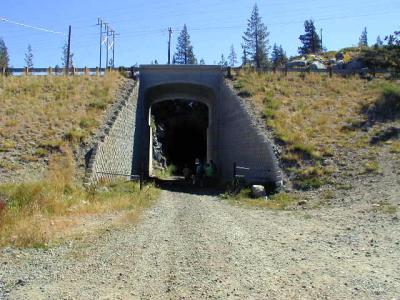 The old railroad right-of-way is only a short ride from old Hiway 40. An interesting fact is that this overcrossing was built to railroad clearances a year or two after the tracks were removed, leading to speculation that the railroad may someday replace the track. This is the summit, and we are about to proceed east, toward Donner Lake and Truckee. |
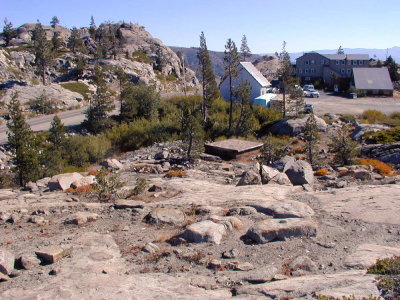 The first tunnel we enter is Tunnel 6, the summit tunnel. This tunnel was carved by hand through solid granite in the mid 1800s. Average progress was about six inches per day. In addition to working from both ends, in order to reduce the time required a vertical shaft was carved at about the mid point of the tunnel so that work could proceed on four faces at once. Upon completion, a steel cap was placed over the top of the shaft. This cap is visible from the old Hiway 40. |
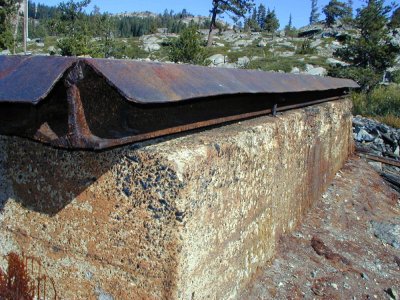 Close up of the cap. It is made of a solid row of rails with a sheet metal cover. |
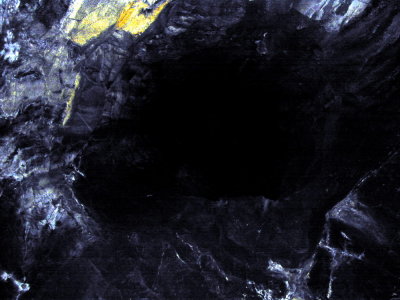 Inside Tunnel 6, looking straight up the shaft. Some day I'll go in here with a powerful light and get a better photo. |
 Well, here's an attempt in 2010 with a spotlight pointed up the shaft. |
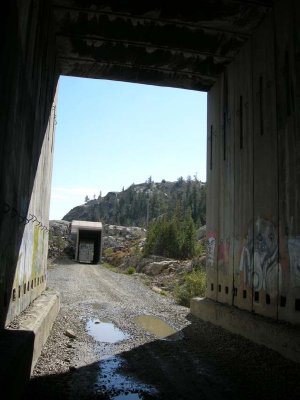 Exiting Tunnel 6, looking at Tunnel 7. |
 Tunnel 7 is actually a short snowshed protecting a cut. It has a distinctive curved roof. |
 This photo was taken maybe 30 years ago. Westbound Southern Pacific 8974 exiting Tunnel 7 with tonnage bound for northern California. The locomotives' dynamic brakes are about to be subjected to the longest continuous railroad downgrade in the United States, a drop of 6,000 feet in elevation. |
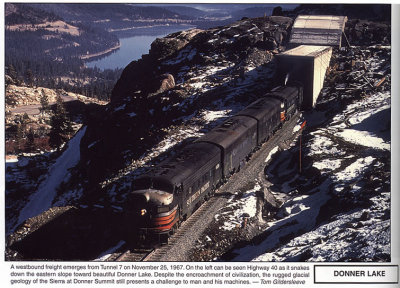 Here's another photo taken of the same spot over forty years ago. These are Electro-Motive F-units in the famous "Black Widow" paint scheme. This type of locomotive is generally credited for (accused of?) the demise of steam power on the Southern Pacific. |
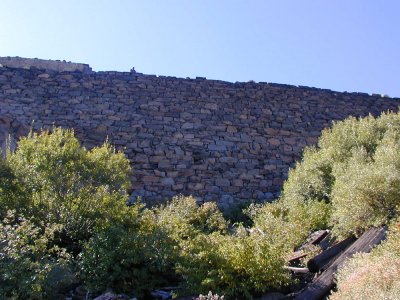 The famous "Chinese Wall," built by hand, carries the right of way between Tunnel 7 and Tunnel 8. |
 Another view of the Chinese Wall, with Tunnel 7 to the west. |
 This photo, maybe taken in the 1950s or 60s, shows the snowshed that once extended out onto the Chinese Wall. |
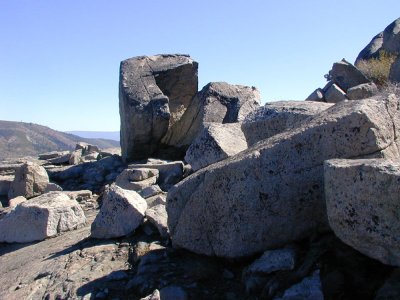 That is NOT a natural rock formation - and it's huge! |
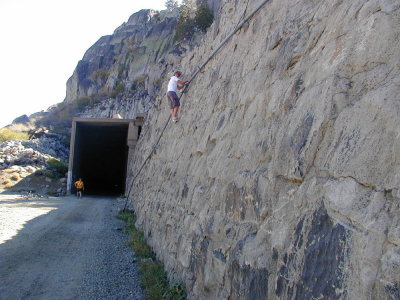 This is the entrance to Tunnel 8, right above the Chinese Wall. If you look closely, you can see "the light at the end of the tunnel." |
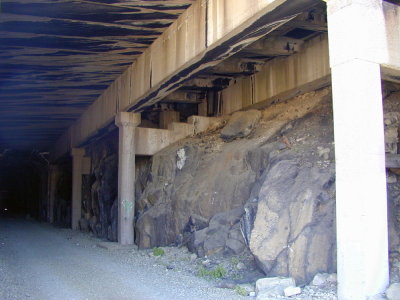 Here is a view of some of the structure inside Tunnel 8. |
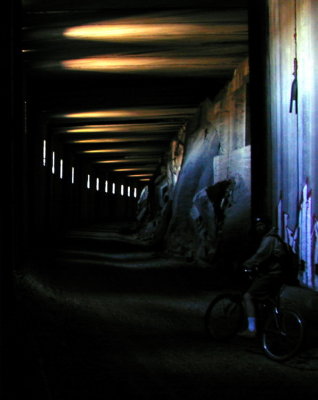 These lighting effects were not intentional, but they are interesting. |
 There are a couple of roll-up access doors along the side of the snowsheds. |
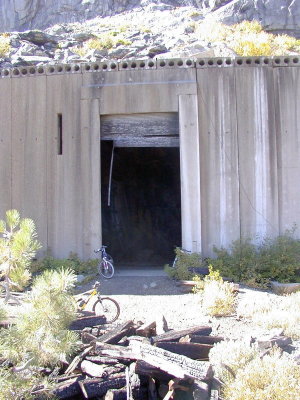 A view of the access door from the outside. |
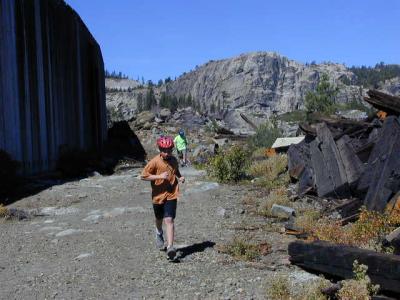 Here we are outside the snowshed. |
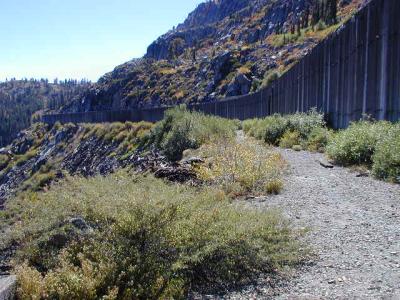 Same spot; looking east. |
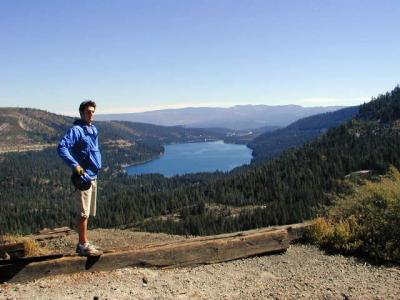 Same spot, looking at Donner Lake. |
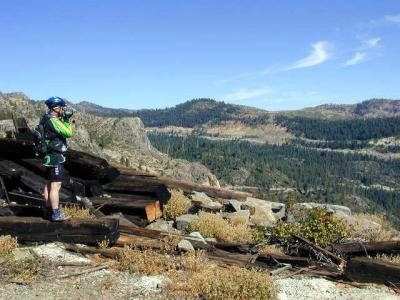 Interstate 80 climbs the mountain on the other side of the valley. |
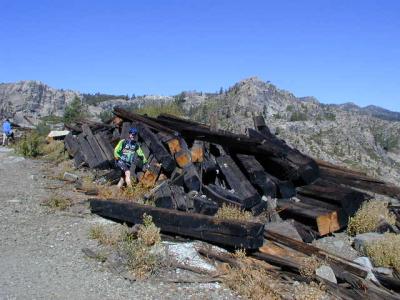 It's been many years since the wooden snowsheds, which at one time covered forty miles of the Donner Line, were replaced with concrete sheds, and then only in the critical areas. Yet piles of timbers from the demolished wooden sheds still line the right-of-way today. If only those wooden beams could tell stories! |
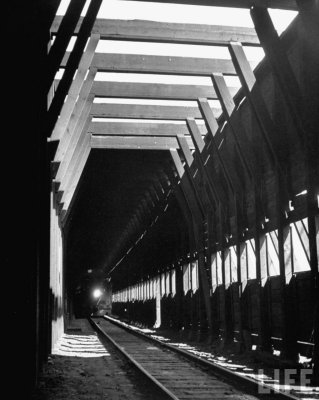 In this Life Magazine photo, maybe taken in the 1940s, a huge "cab ahead" locomotive bears down on the photographer inside a wooden snowshed. An example of the sole survivor of this type of locomotive may be viewed at the California State Railroad Museum in Old Sacramento. |
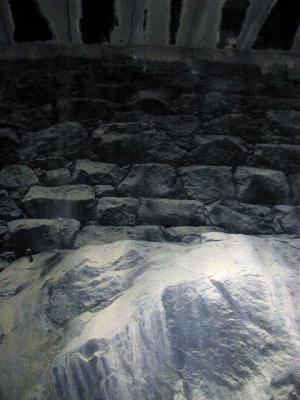 A flash shot taken inside one of the sheds. A concrete wall on one side, concrete roof overhead and Sierra granite and hand hewn rock retaining walls on the other side. Imagine the work! |
 A section of the snowshed had collapsed and was subsequently removed. |
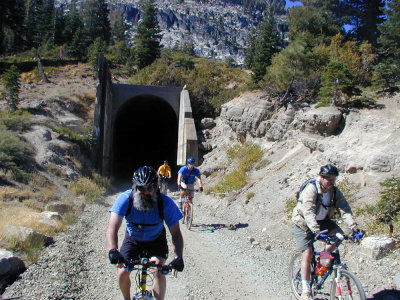 Here we are exiting Tunnel 9. (or is it Tunnel 10?) |
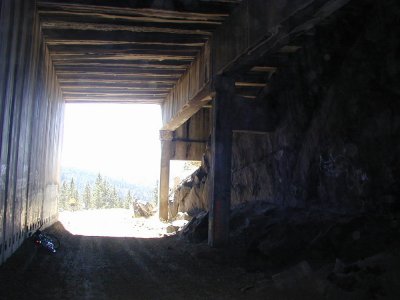 This is the end of the last tunnel of our ride. From here the right of way descends down to the No. 2 right of way, which penetrates Mount Judah via a two mile long bore. |
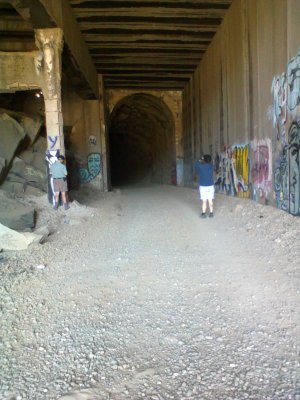 Looking back as we exit the tunnel.
|
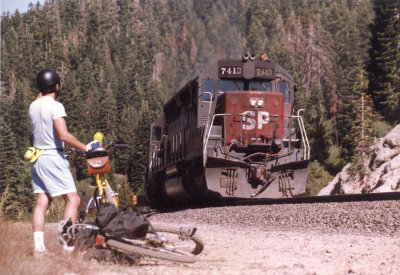 A few feet down the hill from the last photo, I took this photo about twenty years ago, when there was still an active track on the No. 1 right of way. |
 A retaining wall protects a track which is no longer there. |
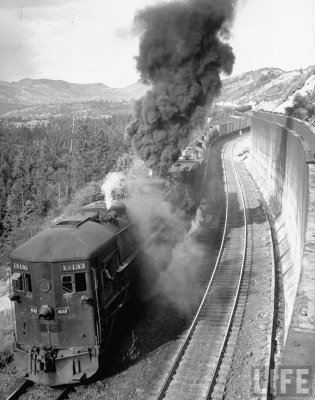 Here another cab ahead locomotive labors uphill past another retaining wall. |
 Coming down the east side, the old Number 1 right-of-way crosses over the top of the active Number 2 track just as it enters the two mile long tunnel through Mount Judah. The boys are on top of a short length of concrete snowshed which protects the entrance to the tunnel. |
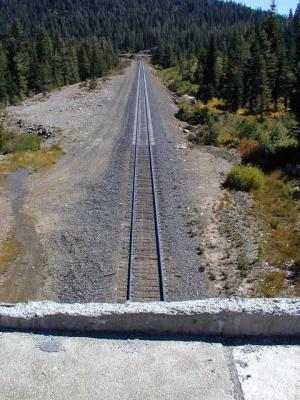 Same location, near the end of the snowshed. You can see where they stopped replacing wooden ties with concrete ties. |
 ...and here comes a westbound, climbing up from Truckee. This photo was taken in 2007. |
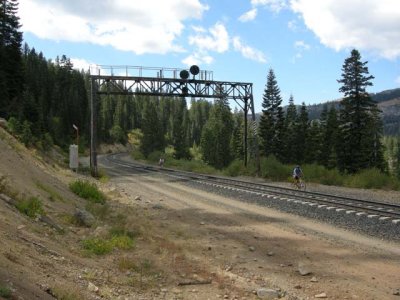 Our ride now takes us along the active right of way, which used to be double tracked. The structure is a signal bridge. The signals tell the engineer if the track ahead is clear. |
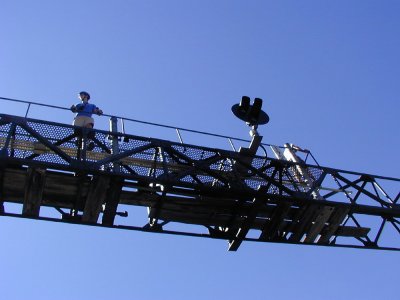 Looking up at the signal bridge. |
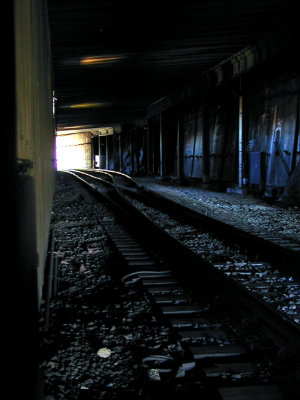 This photo was taken in 2009. A mile or two east of the two mile long tunnel is "Shed 47," which protects the switch where the single track going east once again becomes double track. This shed is clearly visible from I-80 on the other side of Donner Lake. |
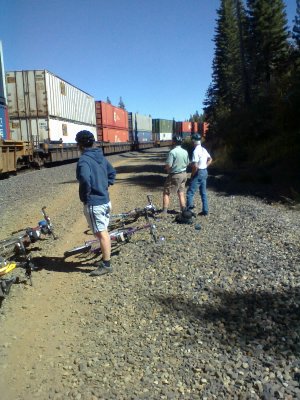 The commerce of the nation rolls by.
|
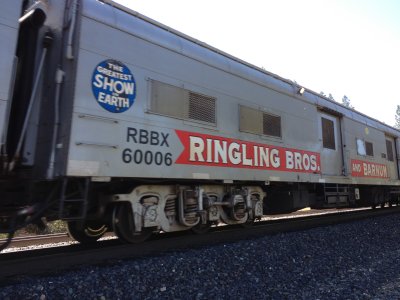 On the 2012 ride, we were surprised to see the Ringling Brothers and Barnum & Bailey circus train roll by. It was leaving California, headed east. |
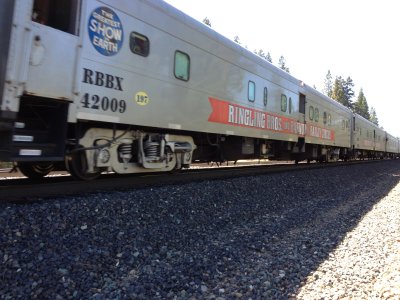 Ringling Brothers and Barnum & Bailey has two trains, the "red tour" and the "blue tour," that tour different parts of the country. This is the blue tour. |
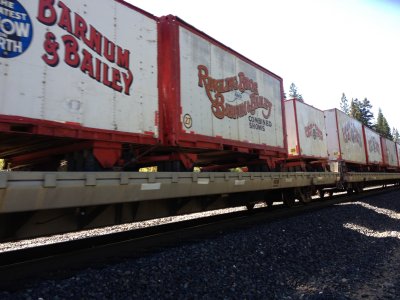 Baggage cars were at the front of the train. You can go to http://www.youtube.com/watch?v=yw2eRjVRLZk&feature=related to see them loading elephants about 9 1/2 minutes into the video. Then there are a number of passenger cars for the employees. Finally there are many flat cars carrying containers of equipment. |
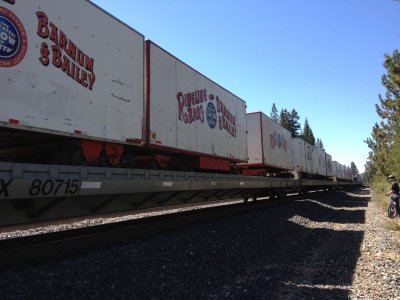 Each of those flat cars is 90 feet long. The entire train is about 5,000 feet long. |
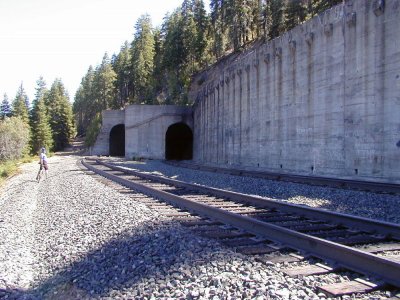 About a mile east of Shed 47 is Andover, where the double track passes through a set of curved tunnels and heads down into Coldstream Canyon on its way to Truckee. Luckily for us there is a road which passes over the top of the tunnels. |
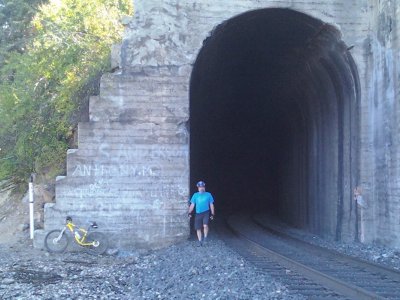 We ain't goin' in there...
|
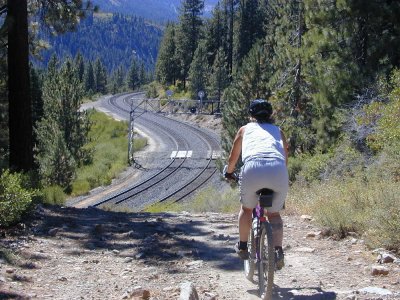 Here we are at the crest of the road over the Andover tunnels. |
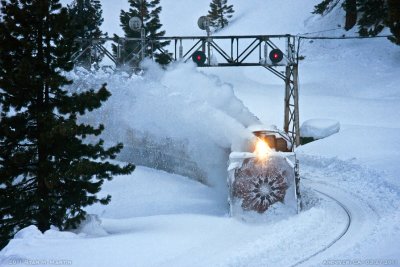 --Photo by Ryan Martin--
|
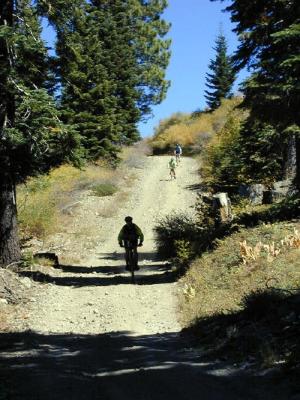 Here we've left the right-of-way and are descending toward Donner Lake. |
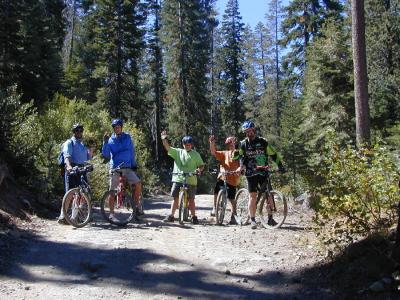 Here's everyone on the 2002 ride except me! |
| previous page | pages 1 2 3 4 5 ALL | next page |
| comment | share |